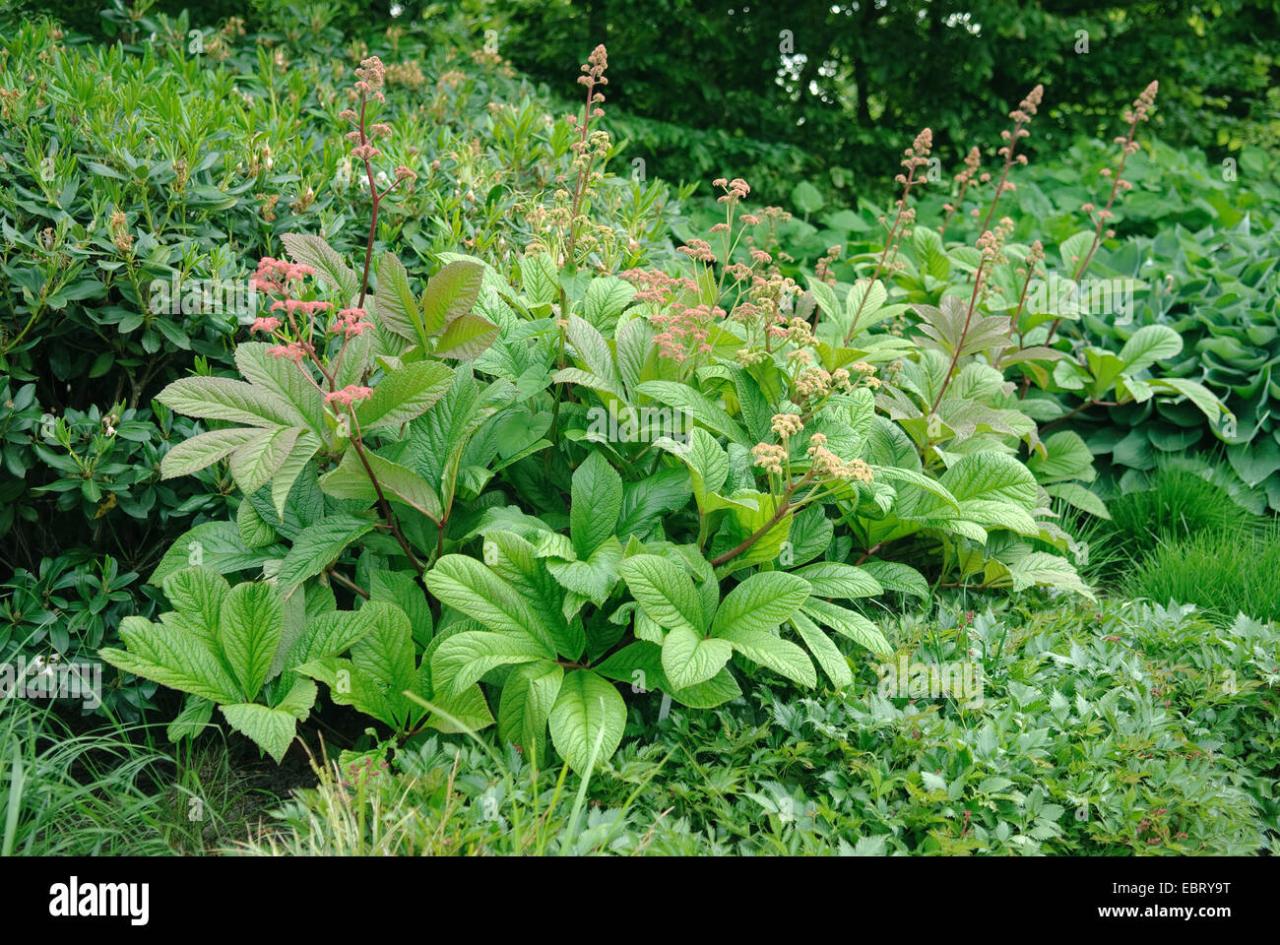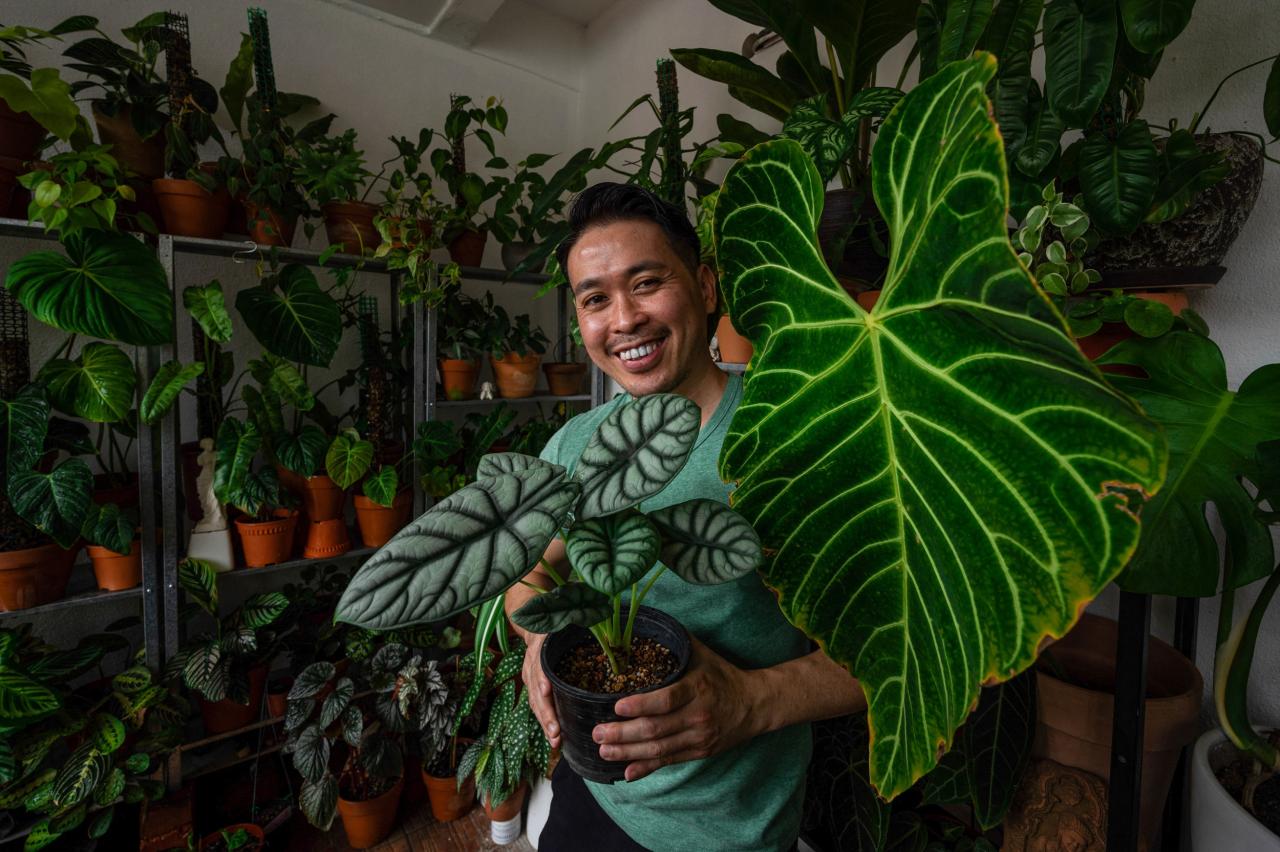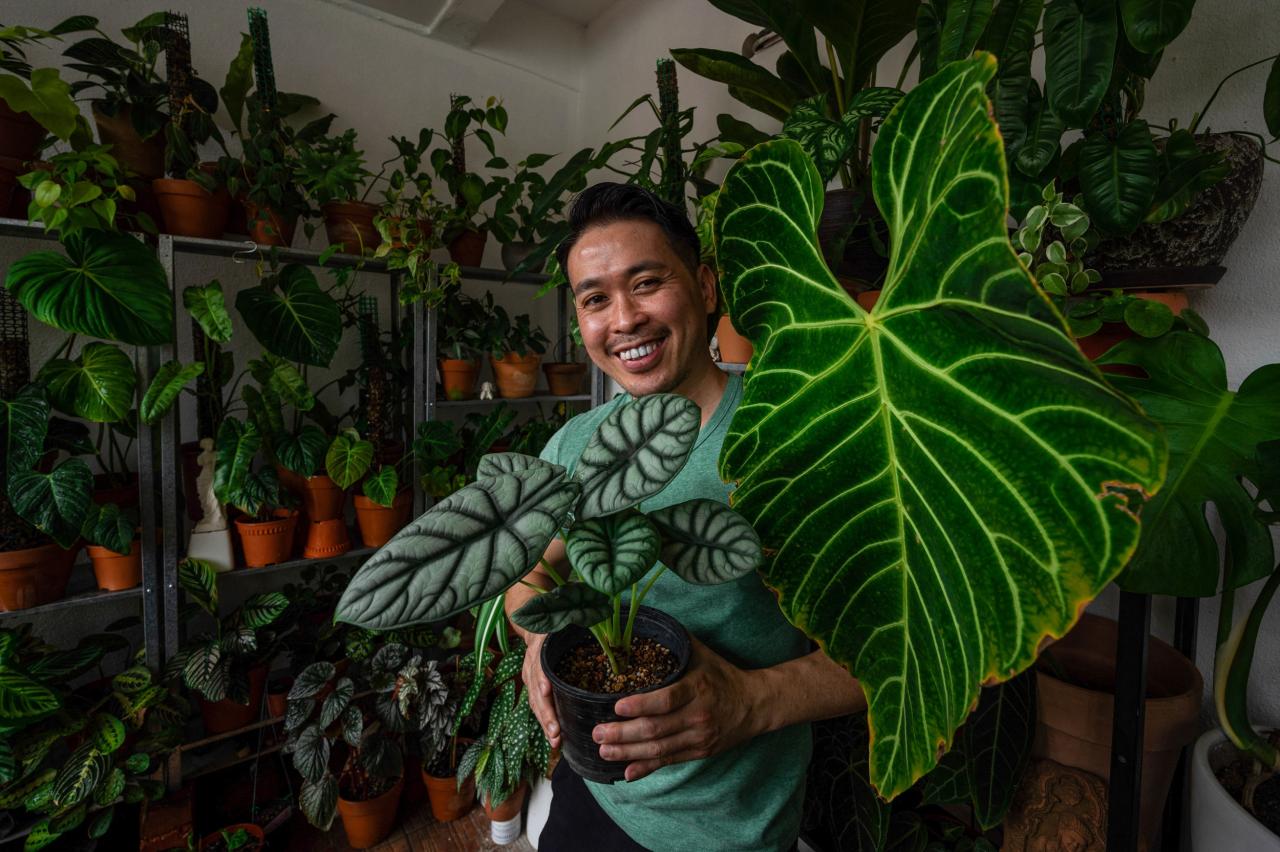Transform Your Space with These Stunning Rodgers Plant Varieties sets the stage for this enthralling narrative, offering readers a glimpse into a world of vibrant foliage and captivating landscapes. Rodgers plants, with their unique characteristics and adaptability, are a gardener’s dream, offering a plethora of options to enhance any outdoor space.
From their striking foliage to their diverse growth habits, these plants offer a stunning array of possibilities for creating a truly breathtaking garden.
This guide delves into the fascinating world of Rodgers plants, showcasing their beauty, versatility, and the transformative power they possess. We’ll explore the different varieties available, highlighting their individual traits and the impact they can have on your landscape. We’ll also provide practical tips for cultivating and maintaining these plants, ensuring their continued vibrancy and health.
The Allure of Rodgers Plants
Rodgers plants, scientifically known as Rodgersia, are a genus of herbaceous perennials renowned for their striking foliage and captivating beauty. Their large, intricately patterned leaves, reminiscent of giant rhubarb or hostas, add a dramatic and exotic touch to any garden.
These plants are not only visually stunning but also remarkably adaptable, thriving in a range of conditions, from dappled shade to moist woodland settings. The captivating beauty of Rodgers plants lies in their unique foliage. The leaves are deeply lobed and palmately compound, often reaching impressive sizes, with some varieties boasting leaves up to 3 feet wide.
Their vibrant green hues, punctuated by intricate veins and textured surfaces, create a mesmerizing visual spectacle.
Varieties of Rodgers Plants
Rodgers plants encompass a diverse range of varieties, each with its distinct characteristics. Some popular cultivars include:
- Rodgersia podophylla:This species, native to China, features large, palmately lobed leaves with a distinctive reddish-bronze tint, particularly during the fall.
- Rodgersia aesculifolia:Known for its large, deeply lobed leaves that resemble those of a horse chestnut tree, this variety boasts a vibrant green color throughout the growing season.
- Rodgersia sambucifolia:This species, with its delicate, fern-like foliage, offers a lighter and airier presence in the garden. Its leaves are deeply divided and finely toothed, creating a delicate texture.
These diverse varieties offer a range of options for gardeners, allowing them to choose the perfect Rodgers plant to complement their existing landscape and create a stunning visual impact.
The Transformative Power of Rodgers Plants
Rodgers plants are more than just aesthetically pleasing additions to the garden; they possess a transformative power. Their large, dramatic foliage can create a sense of grandeur and depth, transforming ordinary spaces into captivating havens. They can be used to define boundaries, create focal points, and add texture and interest to shady areas.
“I used Rodgersia podophylla to create a dramatic backdrop for my patio, and the results were stunning. The large, bronze-hued leaves provided a sense of grandeur and depth, transforming the space into a tranquil oasis.”
Sarah, a passionate gardener.
Showcasing the Beauty
The allure of Rodgers plants lies not only in their versatility but also in the sheer diversity of their foliage. From the delicate fronds of the Japanese Painted Fern to the bold, architectural leaves of the Rodgersia podophylla, each variety offers a unique aesthetic that can transform any garden space.
A Visual Guide to Rodgers Plant Varieties
To truly appreciate the beauty of Rodgers plants, it’s essential to see them in their natural habitat. This visual guide provides a glimpse into the world of these captivating plants, showcasing their distinctive features and highlighting their potential in landscaping designs.
Variety |
Image |
Description |
Growing Conditions |
Landscaping Uses |
|---|---|---|---|---|
Rodgersia podophylla |
[Image of Rodgersia podophylla with large, deeply lobed leaves and a lush green color. The plant is shown growing in a shaded woodland setting, with dappled sunlight filtering through the trees.] |
Rodgersia podophylla is a large, bold-leaved plant with deeply lobed, hand-shaped leaves that can reach up to 2 feet in diameter. The foliage is a vibrant green, often with a slightly bronzed hue. The plant forms a clumping habit, growing to a height of 3-4 feet. |
Prefers partial shade to full shade and moist, well-drained soil. It is adaptable to a range of soil types but performs best in rich, humusy soil. |
Rodgersia podophylla is a striking focal point in shady gardens, especially when planted in groups. It can also be used as a ground cover or to add a touch of drama to woodland gardens. |
Rodgersia aesculifolia |
[Image of Rodgersia aesculifolia with large, palmate leaves that resemble the leaves of a horse chestnut tree. The plant is shown growing in a shady garden setting, with lush green foliage providing a dramatic contrast to the surrounding plants.] |
Rodgersia aesculifolia features large, palmate leaves that resemble the leaves of a horse chestnut tree. The leaves are a deep green, often with a slightly textured surface. This variety grows to a height of 3-4 feet, forming a dense clump. |
Similar to R. podophylla, it thrives in partial shade to full shade and prefers moist, well-drained soil. |
Rodgersia aesculifolia adds a bold statement to shady gardens. Its large, dramatic leaves provide a striking contrast to the surrounding plants. It can be used as a focal point, a ground cover, or a naturalizing plant. |
Rodgersia sambucifolia |
[Image of Rodgersia sambucifolia with large, deeply lobed leaves and a deep green color. The plant is shown growing in a shady garden setting, with the foliage creating a dense, textured ground cover.] |
Rodgersia sambucifolia is a vigorous grower with large, deeply lobed leaves that can reach up to 18 inches in diameter. The foliage is a deep green, often with a slightly glossy finish. This variety grows to a height of 3-4 feet, forming a dense clump. |
Prefers partial shade to full shade and moist, well-drained soil. It is adaptable to a range of soil types but performs best in rich, humusy soil. |
Rodgersia sambucifolia is an excellent choice for ground cover in shady gardens. Its dense foliage creates a lush, textured carpet that can suppress weeds and provide a cool, inviting atmosphere. |
Rodgersia pinnata |
[Image of Rodgersia pinnata with delicate, fern-like leaves that are a vibrant green. The plant is shown growing in a shady woodland setting, with the foliage adding a delicate touch to the surrounding plants.] |
Rodgersia pinnata is a smaller variety with delicate, fern-like leaves that are a vibrant green. The foliage is lighter and more airy than other Rodgersia species, creating a delicate, ethereal effect. This variety grows to a height of 2-3 feet, forming a clumping habit. |
Prefers partial shade to full shade and moist, well-drained soil. It is adaptable to a range of soil types but performs best in rich, humusy soil. |
Rodgersia pinnata adds a delicate touch to shady gardens. Its airy foliage provides a refreshing contrast to the bold, architectural leaves of other Rodgersia species. It can be used as a ground cover, a filler plant, or a companion plant for taller shrubs. |
Transforming Your Space: Transform Your Space With These Stunning Rodgers Plant Varieties
Rodgers plants are not just visually appealing; they offer a remarkable versatility that can transform any outdoor space into a breathtaking haven. Their unique characteristics, from their striking foliage to their adaptability to various climates, make them a go-to choice for landscape designers and home gardeners alike.
Creating a Focal Point in a Garden, Transform Your Space with These Stunning Rodgers Plant Varieties
Rodgers plants are renowned for their ability to command attention and create a focal point in any garden. Their bold foliage, often featuring dramatic shapes and vibrant colors, draws the eye and establishes a visual anchor within the landscape. For instance, the towering ‘Rodgersia podophylla’ with its large, palmate leaves and deep green hues can create a dramatic focal point in a shady garden.
Its size and texture make it a striking centerpiece, especially when placed near a pathway or seating area.
Adding Texture and Depth to Borders
Rodgers plants add a layer of texture and depth to borders, breaking up the monotony and creating a sense of visual interest. Their large, often intricately textured leaves provide a dramatic contrast to smaller, finer-leaved plants, enhancing the overall composition of the border.
For example, the ‘Rodgersia aesculifolia’ with its large, deeply lobed leaves, can be used to add texture and depth to a mixed border. The contrast between its coarse texture and the finer texture of surrounding plants creates a dynamic and visually appealing effect.
Providing Privacy and Screening
Rodgers plants are effective in providing privacy and screening, creating natural barriers that offer seclusion and define different areas within a garden. Their dense foliage and tall stature can create a sense of enclosure and shield unwanted views. The ‘Rodgersia sambucifolia’ with its tall, upright habit and large, deeply divided leaves, is an excellent choice for creating a privacy screen.
Its dense foliage effectively blocks out unwanted views while providing a lush and verdant backdrop.
Enhancing the Visual Appeal of Pathways and Walkways
Rodgers plants can enhance the visual appeal of pathways and walkways, framing them with their striking foliage and creating a sense of movement and direction. Their bold forms and textures create a visual rhythm that guides the eye along the path, adding a touch of elegance and sophistication to the landscape.
Transforming your space with stunning plant varieties can take many forms, from vibrant blooms to lush foliage. For a truly unique touch, consider the art of Bonsai , the practice of cultivating miniature trees in containers. Bonsai trees can bring a touch of Zen and tranquility to any room, offering a captivating focal point that complements your existing plant collection and elevates the overall aesthetic of your space.
The ‘Rodgersia tabularis’ with its large, flat, circular leaves, can be used to create a dramatic effect along a pathway. Its unique foliage adds a touch of whimsy and interest to the surrounding landscape.
Cultivating Success

Rodgers plants, with their captivating beauty and resilience, offer a rewarding experience for gardeners of all levels. To ensure your success, it’s crucial to understand the specific needs of these plants and provide them with the right environment and care.
This section will guide you through the essential steps to cultivate thriving Rodgers plants.
Choosing the Right Location and Soil Conditions
The foundation of successful Rodgers plant cultivation lies in selecting the appropriate location and soil conditions. These plants thrive in environments that mimic their natural habitat, ensuring their optimal growth and development.
- Sunlight:Rodgers plants generally prefer partial shade, especially during the hottest hours of the day. Direct sunlight can scorch their foliage, while too much shade can hinder their growth and flowering. Ideally, choose a location that receives dappled sunlight or morning sun with afternoon shade.
- Soil:Well-drained soil is essential for Rodgers plants. They are intolerant of waterlogging, which can lead to root rot. A soil mix rich in organic matter, such as compost, will provide the necessary nutrients and drainage. Consider adding a layer of mulch to the soil to retain moisture and suppress weeds.
Proper Planting Techniques
Planting your Rodgers plants correctly is crucial for their establishment and long-term health. Here’s a step-by-step guide to ensure a successful planting process.
- Digging the Hole:Dig a hole twice as wide and as deep as the plant’s root ball. This will allow for adequate root expansion and drainage.
- Amending the Soil:Mix in a generous amount of compost or other organic matter to the soil removed from the hole. This will improve drainage and provide essential nutrients.
- Positioning the Plant:Carefully place the plant in the hole, ensuring the crown (the point where the roots meet the stem) is at or slightly above soil level.
- Backfilling:Gently backfill the hole with the amended soil, making sure to avoid air pockets. Firm the soil around the plant to provide support.
- Watering:Thoroughly water the newly planted Rodgers plant to settle the soil and promote root establishment.
Watering and Fertilizing Requirements
Maintaining the right moisture levels and providing adequate nutrients are essential for the health and vigor of your Rodgers plants.
- Watering:Rodgers plants generally prefer consistent moisture but dislike soggy conditions. Water deeply and thoroughly, allowing the soil to dry slightly between waterings. During hot, dry periods, you may need to water more frequently.
- Fertilizing:Rodgers plants are light feeders and generally don’t require heavy fertilization. A balanced, slow-release fertilizer applied in spring can provide the necessary nutrients for healthy growth. Avoid over-fertilizing, as this can damage the plant.
Pruning and Maintenance Practices
Pruning and maintenance practices are essential for maintaining the shape, health, and vigor of your Rodgers plants.
- Pruning:Rodgers plants typically require minimal pruning. You can remove any dead or diseased branches or stems as needed. To encourage bushier growth, you can pinch back the tips of new shoots.
- Mulching:A layer of organic mulch, such as wood chips or shredded bark, can help retain moisture, suppress weeds, and regulate soil temperature.
- Winter Protection:In colder climates, Rodgers plants may benefit from winter protection. You can cover the base of the plant with a layer of mulch or burlap to prevent frost damage.
Troubleshooting Common Problems
While Rodgers plants are generally hardy, they can be susceptible to certain problems. Understanding these issues and their solutions can help you keep your plants healthy.
- Pests:Rodgers plants are relatively pest-resistant. However, they can be susceptible to aphids, spider mites, and other common garden pests. If you notice any signs of infestation, you can use a mild insecticidal soap or neem oil to control the pests.
- Diseases:Rodgers plants are also relatively disease-resistant. However, they can be affected by fungal diseases such as powdery mildew or leaf spot. If you notice any signs of disease, you can treat the affected plants with a fungicide.
- Poor Growth:If your Rodgers plant is not growing well, it could be due to a lack of sunlight, poor drainage, or inadequate fertilization. Make sure your plant is receiving the right amount of sunlight and water, and consider applying a balanced fertilizer to provide essential nutrients.
Beyond the Garden
The allure of Rodgers plants extends far beyond their aesthetic appeal. They offer a wealth of ecological and sustainable benefits, making them a valuable addition to any landscape.
Ecological Benefits
Rodgers plants play a vital role in supporting healthy ecosystems. They provide a range of benefits that contribute to the well-being of both flora and fauna.
- Rodgers plants are known to attract a diverse array of pollinators, including bees, butterflies, and hummingbirds. These pollinators are essential for the reproduction of many plant species, including food crops. By providing a rich source of nectar and pollen, Rodgers plants help to support pollinator populations and ensure the continued vitality of our ecosystems.
- These plants also provide valuable habitat for wildlife. Birds, insects, and small mammals can find shelter, nesting sites, and food sources in the dense foliage and intricate root systems of Rodgers plants. By creating these havens for wildlife, Rodgers plants contribute to biodiversity and ecological balance.
- Rodgers plants are effective in reducing erosion. Their extensive root systems help to bind soil, preventing it from being washed away by rain or wind. This is particularly important in areas prone to erosion, such as slopes and riverbanks. By stabilizing the soil, Rodgers plants help to protect water quality and prevent sediment runoff.
- Rodgers plants can also improve air quality. They absorb carbon dioxide from the atmosphere during photosynthesis and release oxygen. This process helps to mitigate the effects of climate change and improve the overall health of our environment.
Sustainable Practices
The sustainable nature of Rodgers plants makes them an ideal choice for environmentally conscious gardeners.
- Rodgers plants are generally low-maintenance. They require minimal watering and fertilization, making them an attractive option for busy gardeners or those seeking to reduce their environmental impact.
- Rodgers plants are highly adaptable and can thrive in a variety of challenging conditions, including poor soil, drought, and shade. This resilience makes them a valuable asset for sustainable landscaping projects, as they can thrive without the need for extensive irrigation or soil amendments.
Conclusive Thoughts

With their ability to create stunning visual effects, provide habitat for wildlife, and contribute to a healthier environment, Rodgers plants are a valuable asset to any garden. By incorporating these captivating plants into your landscape, you can create a space that is not only beautiful but also sustainable and enriching.
So, embark on a journey of discovery, explore the diverse world of Rodgers plants, and unlock the potential to transform your space into a vibrant, flourishing haven.
FAQ Resource
What is the best time to plant Rodgers plants?
The ideal time to plant Rodgers plants is in the spring or fall, when the soil is cool and moist. This allows the plants to establish themselves before the heat of summer or the cold of winter.
How often should I water my Rodgers plants?
Rodgers plants generally prefer moist soil, but they also need good drainage. Water them deeply and thoroughly, allowing the soil to dry slightly between waterings. The frequency of watering will depend on the climate, soil type, and the plant’s size.
Are Rodgers plants susceptible to any pests or diseases?
Rodgers plants are generally pest-resistant, but they can be susceptible to aphids and slugs. You can control these pests by using insecticidal soap or neem oil. In terms of diseases, Rodgers plants are prone to powdery mildew, especially in humid conditions.
Good air circulation and avoiding overhead watering can help prevent this disease.
